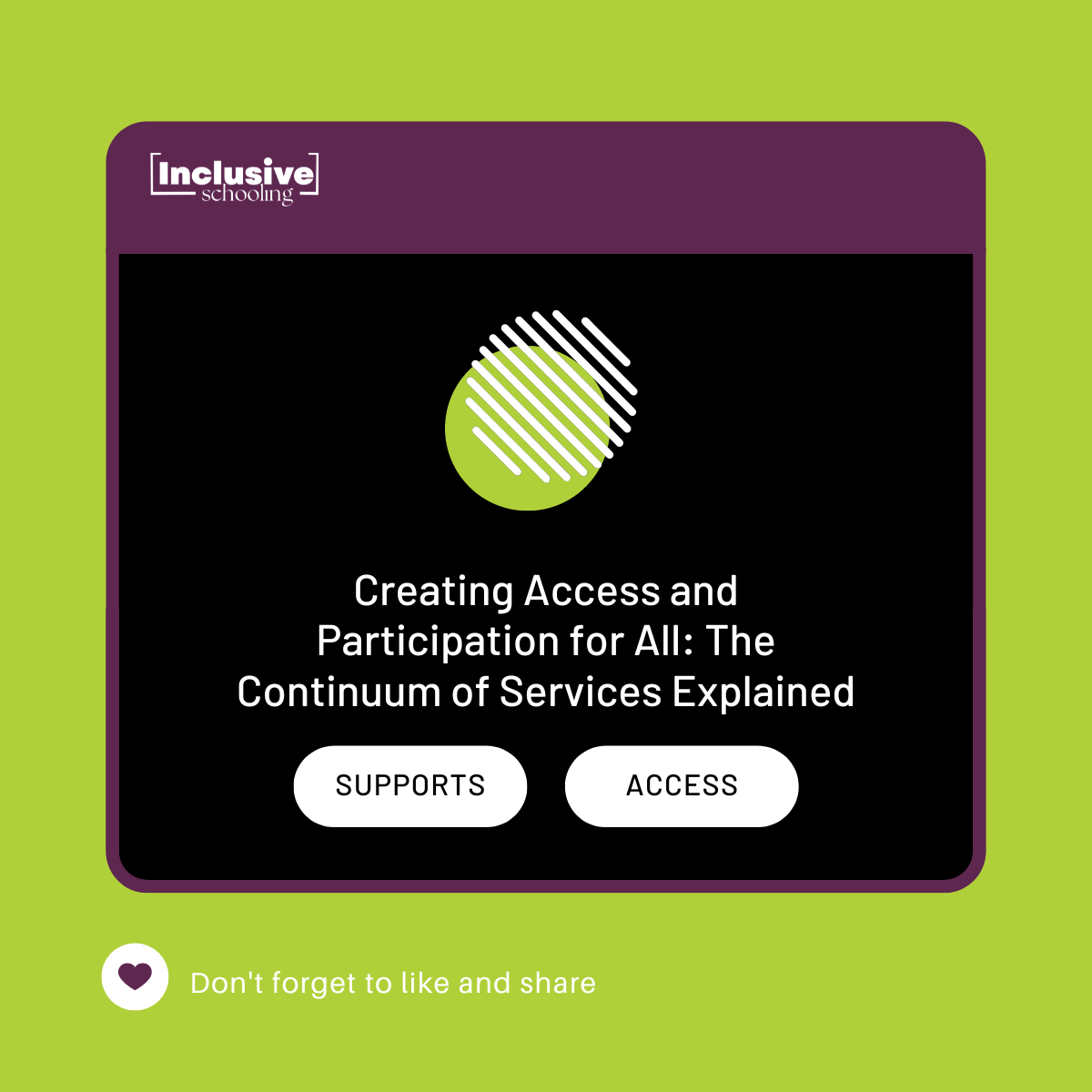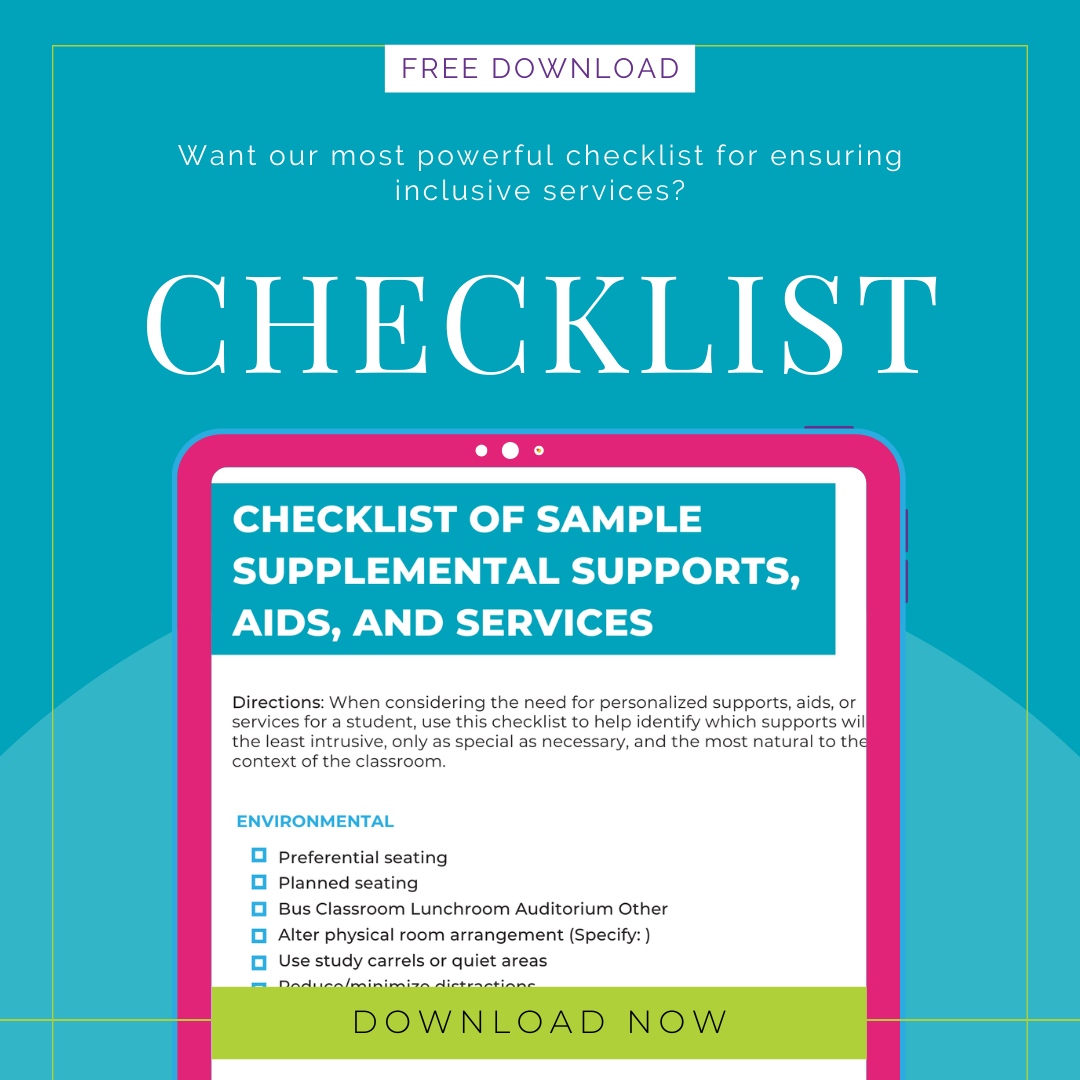In special education, two critical concepts often arise inclusive education and the continuum of services. At first glance, these might seem like opposing ideas, but they actually work together harmoniously. This blog post will explore how these concepts intersect. We'll delve into what a continuum of supports and services looks like, the role of Individualized Education Programs (IEPs), and how these elements ensure that every student has access, participation, and progress in their education.
The Continuum of Services and Inclusive Education: A Perfect Harmony
When discussing a continuum, we refer to a range of supports and services tailored to individual student needs, as determined by their IEP team. This continuum must be broad and flexible enough to address various requirements, ensuring each student can access the curriculum, participate fully in school activities, and make meaningful progress.
Least Restrictive Environment (LRE) and Inclusion
The least restrictive environment (LRE) requirements of Part B of the Individuals with Disabilities Education Act (IDEA) are foundational in special education and have been included in the law in the present form since 1975. It mandates that students with disabilities should be educated alongside their non-disabled peers to the greatest extent appropriate. This principle aligns seamlessly with inclusive education, which advocates for the inclusion of all students in general education settings with necessary supports and services.
For example, imagine a student named Alex who has an IEP due to a learning disability. Alex's IEP team might determine that he needs specific reading interventions and assistive technology to participate in the general education curriculum effectively. By providing these supports within the general education classroom, Alex can learn alongside his peers, benefiting from both the inclusive environment and the targeted services he needs.
Further, decades of research and experience have revealed both how to effectively support diverse students in less restrictive environments and the harm caused by placements such as self-contained classrooms. Thus, Individualized Education Program (IEP) teams should be called upon to consider a continuum of supports and services to ensure access to the general education curriculum thoroughly before considering alternative placements.
The Role of Individualized Education Programs (IEPs)
At the heart of ensuring a continuum of supports and services is the IEP. Each IEP is a legally binding document tailored to the unique needs of a student with disabilities. One of the critical components of an IEP is the specification of supports and services required for the student to achieve their educational goals.
IEP Goals and Services: A Symbiotic Relationship
IEP goals are designed to address the specific areas where a student needs improvement. For each goal, there must be corresponding supports and services to help the student achieve it. These might include speech therapy, occupational therapy, or humanistic behavioral supports. The ultimate aim is to ensure that the student has access to, can participate in, and makes progress in the general education curriculum.
Beyond Placements: Focus on Supports and Services
A common misconception is that a continuum of services means a continuum of alternative placements. While some schools focus on placement rather than supports, effective inclusion results from IEP teams prioritizing supplemental aids and services within the general education curriculum and classroom to ensure the least restrictive environment (LRE). The goal is not to find a place for the student but to provide the necessary assistance for their success in the LRE.
FREE CHECKLIST: Want our most powerful checklist for ensuring inclusive services?
Want a comprehensive list of support options to ensure inclusion?
- Effective strategies to try before even considering a pull-out setting
- Wildly expand your options for student support
- A must-have checklist for every IEP meeting!
- Get everyone thinking outside the box!
- Creative solutions to providing services and supports
- Finally, a common starting place for parents and educators
Inclusive education and a continuum of services are integral to creating an equitable and supportive learning environment for all students. By focusing on individualized supports and ensuring access, participation, and progress, we can foster a more inclusive and empowering educational experience. As educators, parents, and advocates, it's our responsibility to embrace these principles and work together to provide the best possible outcomes for every student.
Let's commit to promoting inclusive education and supporting the diverse needs of all students. Share this blog post with your colleagues, join discussions on inclusive practices, and advocate for policies that ensure every student has the opportunity to thrive.
Resources to Learn More:
- What is a common error made during IEP meetings? https://youtu.be/AYa7yip1cLI
- Individualized Services & Supports https://iris.peabody.vanderbilt.edu/module/iep01/cresource/q3/p08/


